#Miña terra galega
Text
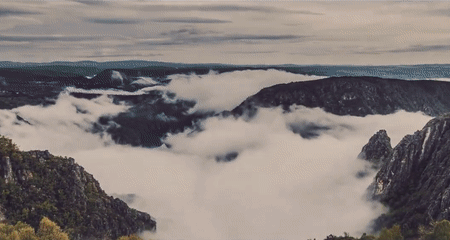

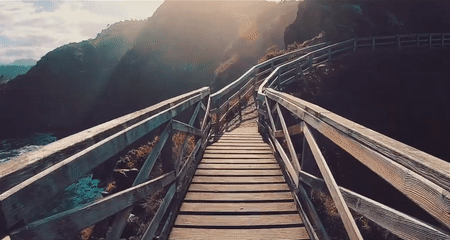
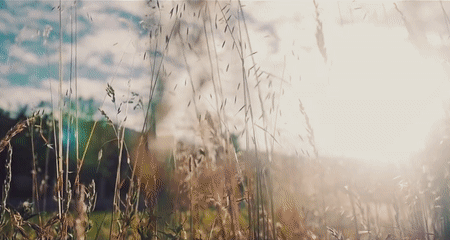
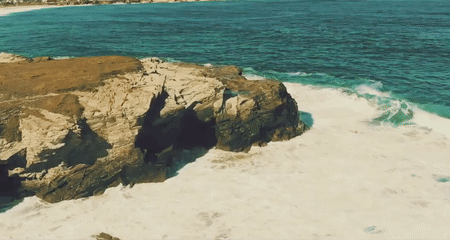
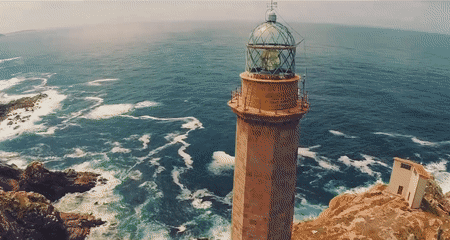
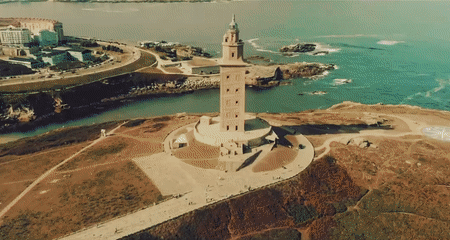
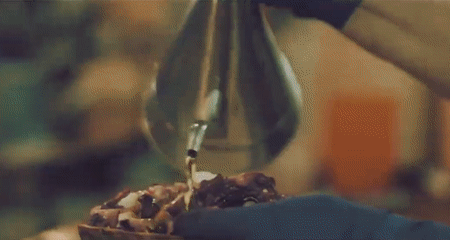


Happy July'25 - Feliz 25 de Julio
'Morriña' by Gonzalo Shaggy Garcia
3 notes
·
View notes
Text

Galicia, Spain.
2 notes
·
View notes
Text
"Xente" - Berrogüetto
10.0 (2006)
Oe o son do andar
Son os que veñen sen pan
Saen do seu despertar
Collidos da túa man
Óllame óllate
Olla os ollos dos ven
Ven de ti ven de min
Óllame óllate
Xente que vai soa
Xente vai embora
Xente que namora a
Xente
1 note
·
View note
Text
Takekazu Asaka: «Para min, nipogalego, a lingua propia da Galiza é a miña segunda lingua»
A Academia Galega recibe este sábado como membro de honra ao profesor, embaixador da lingua e a cultura galega en Xapón. Asaka descubriu o galego en 1977 durante unha estancia en Madrid ao ver nun quiosco un semanario que non estaba escrito no mesmo idioma que o resto. Era ‘A Nosa Terra’.
Takekazu Asaka (Tokio, 1952) foi nomeado este sábado novo académico de honra da Real Academia Galega…

View On WordPress
0 notes
Photo

Stone. Sea. Galicia.
Pedra. Mar. Miña terra galega.
942 notes
·
View notes
Text
yeah
5 notes
·
View notes
Text
Nadador, 1995

Vari Caramés
1.
Escribo, falo, dende Louro, nunha casa de verán aínda habitada nas primeiras chuvias de setembro. Marcharon os veraneantes pero permanecen o mar, os piñeiros, que semellan máis en calma, á espera da seguinte tempada.
Pola noite saímos pasear. Escasean as ventás iluminadas nesta parte da vila. Son recortes, como de cámara analóxica e álbum familiar. Miro dentro pero non é voayeurismo. Reconfórtanme os hábitos dos demais, os seus xestos inacabados.
Á volta, na casa da praia, comeza a ir frío e sobre a miña cama alguén tendeu xentil unha manta portuguesa de pastoreo. É grosa e pouco suave e aínda así síntoa tenra. Ten o tacto dos animais que secan na cuadra. Ten o tacto da terra no verán. Puño pechado.
2.
Di Vari Caramés que emprega os defectos da cámara, da máquina, para crear efectos. Dende a sala de estar vexo a praia de San Francisco e está deformada (borraxeira, ceo nubrado, manta de auga). A primeira hora da mañá o mar aparecía contundente, xigantesco. Á última da tarde, as ondas rompen mainas emerxendo dende un fondo difuso, coma un cristal embazado. O mar agochouse.
Dúchome en auga moi quente. Vin a esta casa para calmar os meus nervios, para deter un impulso de ansiedade que me engana. No último mes, por veces, a miña mirada tamén se desenfocou. Sufro o efecto dos defectos da máquina. Corpo. Non é algo raro, está aí fóra. O mar dáme a razón.
3.
Son un convidado en Louro, comparto casa cunha familia que me quere ben. O segundo día, o fillo máis vello confunde os laios dun can que chora con música. Podería ser música.
Hai pouco, paseando con miña irma pola noite, fíxome ver que había mesturado co cemento das beirarrúas algo que brillaba, coma cristais diminutos. Díxenlle que tiña alma de poeta. Ela contestoume que non, que só tiña ollos. Hai que saber mirar.
4.
Alguén pasea cun paraugas pola praia. Ninguén nada.
A imaxe de Vari é en realidade un recordo inventado, un tempo que foi e xa non. O traxe de baño vermello, no centro, é coma un corazón novo. Imposible saber se comeza o amor ou acaba de rematar. O desenfoque representaría un aire de alegría ou de pena. Aprendín estes días que a tristura tamén ten algo de euforia.
O nadador de Vari mergúllase a escasa profundidade. Eu creo que desaparece, que é efervescente, que marchará pouco a pouco coa chegada do inverno. E quedará a fotografía. Coma unha ferida que cura. E nós continuaremos paseando rematado o verán.
[este texto foi creado para o proxecto Na voz da obra promovido polo Consello da Cultura Galega e pode escoitarse na voz do autor premendo aquí]
3 notes
·
View notes
Text
O rexurdimento
AÍndice:
1. O rexurdimento: definición, época, etapas.
2. Xéneros literarios no Rexurdimento
3. Autores : os precursores, grandes autores ( Rosalía de Castro, Curros Enríque, Eduardo Pondal)
4. Principais obras de cada autor.
5. Selección de textos de cada autor.
1.O Rexurdimento
É a etapa cultural da historia de Galicia que se desenvolveu ao longo do século XIX e cuxa principal característica foi a dinamización da lingua galega como vehículo de expresión social e cultural.
Reviviu o espírito rexional e a identidade subxectiva das rexións españolas. A consideración de linguas non oficiais cambia e revalorízase, fronte ao último universalista da Ilustración, tradicións, linguas e dialectos autóctonos. En Galicia chocan a lingua castelá, urbana e favorecida pola burguesía, e a lingua galega, que era considerada rural e campesiña e que estaba sen cultivo literario e sometida a unha gran diglosia. Aparece unha conciencia nacional e reivindícase a lingua galega como distintivo da personalidade de Galicia.Provincialismo: O provincialismo foi un movemento político que xurdiu en Galicia (España) arredor de 1840 e foi un dos primeiros antecedentes do nacionalismo galego e galego. O seu obxectivo era a recuperación de Galicia como provincia única que mantiña a unidade administrativa, social, cultural e económica. Esta unidade perdera coa división provincial de 1833, que acabara formalmente co que se chamara reino de Galicia. Politicamente tivo o seu momento central nos acontecementos de abril de 1846. Literamente deu orixe ao Rexurdimento. Regionalismo: Ao mesmo tempo que noutras zonas, na década de 1880 aparece un movemento de carácter rexionalista, que busca, xustifica e defende o emprego do galego e a consecución dun dereito á autonomía política e administrativa, pero sen rachar a unidade de España. O rexionalismo formulouse desde dúas posturas diferentes: A LIBERAL , liderada por MANUEL MARTÍNEZ MURGÍA. as o Xustificou a realidade de Galicia en razóns étnicas, idiomáticas, xeográficas e históricas o Reivindicou o dereito a recuperar a súa autonomía política, que se lograría con descentralización administrativa e económica A CONSERVADORA, TARDICIONALISTA E CATÓLICA, representada por ALFREDO BRAÑAS. o Defendeu a idea da dobre patria (a grande e a pequena) para así compaxinar o rexionalismo coa unidade de España o Avogou polas institucións propias para o goberno das rexións (estas teorías podíanse aplicar a todas as rexións que tivesen aspiracións á autonomía política) o Para Galicia incluía o catolicismo como trazo fundamental, así como o cooperativismo social e gremial como base das institucións políticas rexionais. Apareceron as primeiras organizacións de tipo galeguista, así como os primeiros xornais.
2.Xéneros literarios no Rexurdimento
Cando falamos da literatura do Rexurdimento, estamos a referirnos fundamentalmente á poesía. E é que o Rexurdimento é un movemento fundamentalmente lírico, xa que tanto a narrativa como o teatro galego van xurdir a partir da década de 1880 (ao final do Rexurdimento e ao comezo do período intersecular). Entón, estes dous xéneros vivirán o seu (re) nacemento con case vinte anos de retraso respecto da poesía. Polas características do xénero, os rexionalistas consideraron a lírica como a máis adecuada para a literaturización da lingua e a dignificación da lingua.
3. Autores
Rosalia de Castro:
Fecha de nacimiento: 24 de febrero de 1837, Santiago de Compostela
Fallecimiento: 15 de julio de 1885, Padrón
Obras notables: Cantares gallegos; Follas novas; La hija del mar; Lieders
Cónyuge: Manuel Murguía (m. 1858–1885)
Hijos: Ovidio Murguía de Castro, Gala Murgía
Ata os oito anos, Rosalía estivo baixo custodia da súa tía paterna Teresa Martínez Viojo na aldea de Castro de Ortoño, pertencente ao concello de Ames na Coruña. É neste momento cando a escritora toma conciencia da dureza da vida da traballadora galega, así como nesta parte da súa vida cando ten coñecemento e experiencia do propio mundo rural de Galicia: lingua, costumes, crenzas ou as cantigas que tanto influíron na súa obra titulada Cantares gallegos. Aínda que non se sabe con exactitude a data na que a nai de Rosalía decide coidala, sábese que arredor de 1850 a nova trasládase á cidade de Santiago de Compostela onde viviu xunto a ela, aínda que xa vivira. anteriormente con ela en Padrón.É nesta cidade galega onde Rosalía recibiu a instrución de que naquel momento era a máis axeitada para unha señorita (nocións básicas de debuxo e música), asistindo regularmente ás actividades culturais promovidas polo Liceo de Mocidade xunto con destacadas personalidades da mocidade intelectual compostelana como Manuel Murguía (non se dubida se foi neste momento cando coñece a Murguía ou despois, no seu traslado a Madrid), Eduardo Pondal e Aurelio Aguirre. A relación que Rosalía mantivo con Aurelio Aguirre non deixa de ser motivo de discusión entre os distintos críticos, xa que aínda que se descoñece se houbo unha relación sentimental entre ambos, a obra do mencionado nome deixou unha pegada en certos poemas da literatura.
Follas Novas: É un poema publicado en 1880 por Rosalía de Castro (1837-1885). Foi escrito na cidade de Valladolid de Simancas, onde naquela época vivía xunto ao seu marido, nomeado director do Arquivo Xeral do Reino de España, situado nesa cidade.
Rosalía inicialmente concibiu estes poemas como unha continuación das cancións galegas: o 40% dos poemas de Follas novas teñen afinidade co texto publicado en 1863, mentres que o resto das composicións teñen un espírito poético diferente, motivado pola emigración, infortunios familiares e enfermidades físicas e morais. Estamos, xa que logo, ante unha poética que afonda nos sentimentos, na saudade e que con frecuencia ten, polo horizonte, a fronteira do propio ser:
Negra Sombra:
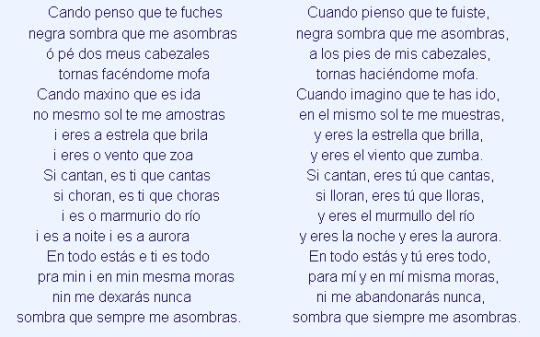
Curros Enríquez:

(Celanova, 1851 - A Habana, 1908) Poeta e xornalista español en lingua galega e española, cuxa obra lírica foi unha das pezas básicas do renacemento da literatura galega. De pensamento liberal e anticlerical, traballou ao longo da súa vida como xornalista, profesión na que obtivo un gran prestixio grazas ao dominio dos recursos do xénero e á solidez conceptual dos seus artigos. Colaborou no Impartial de Madrid e outros xornais republicanos e, en 1898, fundou na Habana, onde se mudara, a revista Tierra Gallega e integrou a redacción do Diario de la marina.
Eduardo Pondal:
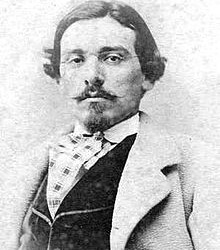
Eduardo Pondal naceu en 1835, en Montesco. Foi o último de sete irmáns dunha familia de orixe Hidalgo, enriquecido coa emigración a América. Estudou gramática latina cun parente clérigo. En 1848 estableceuse en Santiago de Compostela para cursar o bacharelato en Filosofía, sendo estudante frecuentaba as tertulias do "Colexio San Agustín" e coñeceu ao poeta Aurelio Aguirre. Desta época data o seu apaixonado interese pola cuestión rexionalista. Foi un dos organizadores, xunto con Aguirre, do banquete de Conxo, que uniu fraternemente traballadores e estudantes no bosque de Conxo o 2 de marzo de 1856. Nesta ocasión, Pondal leu un poema vingativo, en castelán, "Toast" , sobre a igualdade dos homes. Estudou medicina en Santiago. En 1862, despois de rematar a carreira, traballou como médico da Mariña na base de Ferrol. En 1863 fixo oposicións en Madrid ao Corpo de Saúde Militar, pero, aínda que obtivo un traballo en Asturias, abandonou a praza e abandonou definitivamente a práctica da medicina e retirouse á casa paterna, desde onde realizou frecuentes viaxes a Santiago de Santiago. Compost para participar na tertulia "A Cova Celta", na libraría Carré, xunto con Martínez Salazar, Manuel Murguía, Florencio Vaamonde, Martelo Paumán, Urbano Lugrís. O seu primeiro poema galego apareceu en 1861, no Álbum de Caridade editado polo indio José Pascual López Cortón recompilando todos os poemas participantes nos primeiros Xogos Florais de Galicia. En 1877 publicou Rumores dos piñeiros e en 1886 Queixumes dos pinos. Eduardo Pondal deixou unha ampla produción inédita, que inclúe os poemas "Os Eoas", unha canción épica ao descubrimento de América claramente inspirada en "Os Lusiadas" de Luis de Camões. En 1890, o músico Pascual Veiga pedirá unha carta para unha obra que pretendía presentar a un concurso na Coruña. Eduardo Pondal compón para a ocasión o poema "Os Pinos", cuxas dúas primeiras estrofas formarán parte da letra da melodía. Aínda que a obra non se estrea, o poema será publicado ese mesmo ano nun folleto do certame, así como en varios xornais galegos da emigración cubana. En 1907 estrearase a composición de Veiga na Habana e considerada desde entón o Himno de Galicia. En 1981 será legalizado como himno oficial polo Estatuto de Galicia. Morreu na Coruña, no hotel "La Luguesa", en 1917.
4. Principais obras de cada autor.
Rosalia de Castro:Cantares gallegos (1863), Follas novas (1880), En las orillas del Sar (1884).
Curros Enríque: Cartas del Norte (1875-1876)A Virxe do Cristal (1877)Aires da miña terra (1880) O divino sainete (1888).
Eduardo Pondal: 1886 - Queixumes dos pinos 1992 - Os Eoas.
5. Selección de textos de cada autor.
Rosalia de Castro:
Orillas del sar
A través del follaje perenne
Que oír deja rumores extraños,
Y entre un mar de ondulante verdura,
Amorosa mansión de los pájaros,
Desde mis ventanas veo
El templo que quise tanto.El templo que tanto quise...
Pues no sé decir ya si le quiero,
Que en el rudo vaivén que sin tregua
Se agitan mis pensamientos,
Dudo si el rencor adusto
Vive unido al amor en mi pecho.
Curros Enríque:
Quero morrer eiquí (cando me chegue
a hora da viaxe que me agarda).
Eiquí, niste silencio
de pombas arruladas,
niste vento que dorme nos piñeiros
un profundo soño de arelanzas.
Quero morrer eiquí con ollos postos
no fumegar das tellas, na borralla
do tempo, frente a frente
de min, aberta a ialma
aos latexos das horas, nunha tarde
ateigada de arpas.
Van e veñen as nubes vaixeiras,
as anduriñas pasan.
O pandeiro da chuvia
repinica unha maina
melodía de outono,
que no roncón do río se acompasa.
Quero morrer eiquí.Ser sementado
nesta miña bisbarra.
Finar eiquí o meu cansancio acedo,
pousar eiquí pra sempre as miñas azas.
Celso Emilio Ferreiro
¡Ai!
¿Cómo foi?.-... -eu topábame fora
cando as negras vixigas lle deron;
polo aramio súa nai avisóume
i eu vinme correndo.
¡Coitadio! Sintindo os meus pasos
revolvéu cara a min os seus ollos.
Non me viu...e chorou...¡ai! xa os tiña
ceguiños de todo
Non me acordo qué tempo me estiven
sobre o berce de dór debruzado;
soio sei que me erguín co meu neno
sin vida nos brazos...
Volvoreta de aliñas douradas
que te pousas no berce valeiro,
pois por el me preguntas, xa sabes
qué foi do meu neno.
Eduardo Pondal:
Pol-o baixo cantando,
O bóo bergantiñan,
Co' aguillada o lombo,
E garboso ademan;
Q' a Ponte-Ceso leva,
En noite de luar,
Grave o carro de táboas,
Anteposto quezáis;
Por cousas que n'esprica,
D' un fondo e vago afan;
Mil escuras suidades,
Ceibando ós ecos vái;
E da pátria a pungente servidume,
Parece recordar.
Ó pé do castro verde,
Ben' os mira ó pasar;
Q' en masa escura e informe,
Ajuntados están,
E na nativa costa,
2 notes
·
View notes
Text
I am the one who shared this song first
so I won this time loco
><
0 notes
Photo










Galicia é diferente.
3 notes
·
View notes
Text

Finisterre, Spain
2 notes
·
View notes
Text
"Pandeirada das Fiandeiras/ Muiñeira de Ramelle" - Luar Na Lubre
Plenilunio (1997)
Alá arriba naquel monte unha fiadiña hai
Quen me dera ir a ela sin o saber miña nai
Ai lalalalala Ailalalalalalala
Esta noite hai unha fía e mañán unha espadela
Bóteme o caldo mi madre que eu tamén quero ir a ela
Ai lalalalala Ailalalalalalala
Os mariñeiros no mare arman vela arman vela
Arman vela, arman vela i eu tamén a vou armar(e)
#song of the day#pandeirada das fiandeiras#muiñeira de ramelle#luar na lubre#music#miña terra galega ❤️
0 notes
Text
O rexurdimento.
Denomínase Rexurdimento á etapa cultural da historia de Galicia que se desenvolveu ao longo do século XIX e que tivo como característica principal a revitalización da lingua galega como vehículo de expresión social e cultural. etapas do rexurdimento Distínguense nel dúas etapas: unha primeira, máis longa e de resultados incertos e unha segunda, desenvolta durante os anos cincuenta e sesenta do século, na que o traballo intelectual de sistematización das características diferenciadoras de Galicia é o suficientmente importante como para que o cultivo literario do galego véxase moi estimulado (en 1853 publícase A gaita galega, de Juan Manuel Pintos) e en 1861 celébranse os primeiros Xogos Florais de Galicia na Coruña.
Ao longo de todo o século, tras o fin do absolutismo e o inicio da monarquía constitucional, nacen diversos movementos galeguistas baseados na defensa da singularidade e da personalidade diferenciada de Galicia. O primeiro deles, aparecido cara aos anos 40, foi o " Provincialismo", que denunciaba a marxinación social do país e procuraba a valoración social da súa arte, dos seus costumes e da historia. Víronse apartados da política despois do seu apoio ao fracasado levantamento militar de Solís -fusilamento dos Mártires de Carral- e refuxiáronse no mundo da cultura e da literatura.
A segunda xeración galeguista, o " Rexionalismo", compaxinou cultura e política, facendo da lingua a súa preocupación primordial.
Nació Rosalía de Castro en Santiago de Compostela el 24 de febrero de 1837. En su partida de nacimiento figura como «hija de padres incógnitos», puntualizándose, sin embargo, que «va sin número por no haber pasado a la Inclusa
Lieders¡Oh, no quiero ceñirme a las reglas del arte! Mis pensamientos son vagabundos, mi imaginación errante y mi alma sólo se satisface de impresiones.
Jamás ha dominado en mi alma la esperanza de la gloria, ni he soñado nunca con laureles que oprimiesen mi frente. Sólo cantos de independencia y libertad han balbucido mis labios, aunque alrededor hubiese sentido, desde la cuna ya, el ruido de las cadenas que debían aprisionarme para siempre, porque el patrimonio de la mujer son los grillos de la esclavitud.
Yo, sin embargo, soy libre, libre como los pájaros, como las brisas; como los árboles en el desierto y el pirata en la mar.
Libre es mi corazón, libre mi alma, y libre mi pensamiento, que se alza hasta el cielo y desciende hasta la tierra, sobervio como el Luzbel y dulce como una esperanza.
Cuando los señores de la tierra me amenazan con unha mirada, o quieren marcar mi frente con unha mancha de oprobio, yo me río como ellos se ríen y hago, en apariencia, mi iniquidad más grande que su iniquidad. En el fondo, no obstante, mi corazón es bueno; pero no acato los mandatos de mis iguales y creo que su hechura es igual a mi hechura, y que su carne es igual a mi carne.
Nombre de nacimientoEduardo María González-Pondal Abente
Nacimiento 8 de febrero de 1835 ponteceso españa fallecimiento 8 de marzo de 1917 82años la coruña lugar de sepultura cementerio de san romado españa naciolidad española
Educacion universidad de santiago de conppostela informacion profesional ocupacion profesional
ocupacion poeta
,escritor politicoymedico
genero poesia obras notables
Queixumes dos pinos
Himno de Galicia
Manuel Curros Enríquez
Información personal
Nacimiento15 de septiembre de 1851
Celanova, Ourense
Fallecimiento7 de marzo de 1908
La Habana
Lugar de sepulturaCementerio de San Amaro (España)
NacionalidadEspañol
Información profesional
OcupaciónEscritor, periodista y poeta
SeudónimoSebastián Zurita
GéneroPoesía
Obras notablesCartas del Norte
A Virxe do Cristal
Aires da miña terra
O divino sainete
1 note
·
View note
Text
QUICK RECAP OF SPAIN’S AUTONOMOUS COMMUNITIES
Hello everyone, I’ve decided to do a quick rundown on Spain’s administrative divisions, with stereotypes and interesting places.
First of all, this is gonna be my personal view, I’m even gonna put there my personal impressions of those places, and I haven’t been to all of Spain (the North is mostly unknown for me, I’m more of a Southern child). Also, I’m gonna say a lot of stereotypes, of course, don’t take them too seriously, it’s all just so you can know what Spaniards think of one another.
Finally, I’ll do first a quick rundown of the administrative division of Spain. We are divided in 17 autonomous communities and 2 autonomous cities. Furthermore, those are divided in a total of 50 provinces. Think of the autonomous communities as just the previous step to states, a lot of freedom but not quite enough to become states.
So, let’s start, I’ll go north to south, and I’ll also make a quick rundown of whatever I think of each province:
GALICIA

(for future reference, I’ll put a photo of the typical landscape, the flag, and the map of the autonomous community)
Capital: Santiago de Compostela
So, Galicia. I like to call her “little UK” or “little Ireland”, because it’s the greenest part of Spain as it rains a lot here. Also they have a Celtic past, with a lot of stone formations similar to Stonehenge throughout all of the landscape. That means also it has a lot of celtic folklore, being the most iconic Galician beings the “meigas” (good witches) and “bruxas” (bad witches). I just picture Galicia being the most magical and mysterious place in Spain.
It’s also known for being the end of the Camino de Santiago (”Way of Saint James”), in Santiago, the capital, probably the biggest pilgrimage in the christian world, and up until America was discovered, it hold the end of the known world, Finisterre (”end of the land”).
Of course, Galician is cooficial here with Spanish. I don’t know much about it, only stuff like miña terra galega (”my Galician land”), expressions like “riquiña” (cutie), that basically every galician word ends in -iño / -iña, or -eiro / -eira, and the best gift Galicians have given to Spaniards, my favourite word in Spanish, “morriña” (the feeling of missing home). Also their Spanish accent is the cutest thing ever, I would listen to a Galician speak for days.
Galicians themselves have the stereotypes of being really indecisive and dull, with “no blood in their veins”. They have a lot of interesting food, all related to the see, as they are sea people. They have a special job just found there, the “percebeiras”, woman who pick barnacles out of the rocks, it’s a really risky and hard job. Other dishes from here are the “pulpo a feira” (octopus) and “vieiras” (scallops), amongst others.
I’ve never been here, but some of the sightings Galicia is famous for are the numerous “rías” (kinda like an estuary), having “rías baixas” and “rías altas”; the Cíes Islands, and the Costa da Morte (”Coast of Death”), which is also the name of my favourite “Sidecars” song.
About the provinces:
-Lugo: Roman city of Lucus Augustus, one of the two walled cities in Spain that still have their walls intact.
-Ourense: The most rural part of Galicia, some people here don’t know Spanish, only Galician.
-Pontevedra: Vigo is the biggest city in Galicia. Rías Baixas. Cíes Islands
-A Coruña: Most populated province. Big. Santiago de Compostela, A Coruña. Tower of Hercules.
ASTURIAS:

Capital: Oviedo
It’s basically Galicia’s little and prettier sister. I’ve never been here, but every person that has been has said that it’s the most beautiful place in Spain. It’s mostly known for its milk, having a lot of cows (in Asturian they are called “vaques”, it’s the only one in asturian / bable that I know). As for Asturian, it’s not an official or co-official language, for what I know it just seems like Spanish but with an -u at the end (the language it’s called “asturianu”, for example).
It’s also known for being the birthplace of Spain, as here the Reconquista started, which has made Asturians a bit arrogant, saying that everything past Asturias is Moorish territory and whatnot. For that, Covadonga, place where the first victory against the moors took place, it’s probably one of the most important places here, along with Oviedo and Gijón, the biggest city.
Here are also the Picos de Europa (Europe Peaks) of the Cantabrian Mountains, a stunning place (depicted in the landscape photo) that gives Asturias a big boost in the race of which place of Spain is the prettiest.
It only comprises one province.
CANTABRIA:

Capital: Santander.
Cantabria, also known as the Land of Cachopos and Miguel Ángel Revilla, because those are mainly the two things Cantabria is known for right now. Cachopo is their main dish, and it’s a total bomb, normally, if you are not cantabrian, you’ll had to eat it between two because it’s too much. I don’t actually have had one so I don’t exactly know what it is, but I know it’s main ingredients are pork and cheese.
Miguel Ángel Revilla, on the other hand, is the president of Cantabrian, and he’s become a bit of a meme of how nationalistic and protective he is of Cantabria, it’s kinda enduring actually.
But, apart from that, I’ve been Cantabria (literally the only place in the north I’ve been to, I know, I suck) and it’s honestly amazing. It has one of the most important archaeological sites in the whole country, the Altamira Paintings, prehistoric carvings in the rock. It also has the beautiful park of Carranque, which is also cool. And the capital, Santander, it’s really beautiful, because it combines the mountains with the coast, and it has this really pretty palace called Palacio de la Magdalena, with lots of birds and even penguins!
Again, only one province.
PAÍS VASCO / BASQUE COUNTRY / EUSKADI:

Capital: Vitoria / Vitoria-Gasteiz
So, Euskadi (Basque Country in Euskera / Basque) is one of the most important Autonomous Communities in Spain. It was the most industrial heavy region and also the one of the richest, being Bilbao the hub of all of that. Of course, we can’t gloss over ETA, the basque terrorist organization that terrorized all of Spain during the 80s, 90s and 00s pursuing the independence of Euskadi. Fortunately, they disbanded around 2015 and now things are better.
Basques have a really distinct culture, with a co-official language (euskera) that doesn’t have indo-european roots and it’s honestly a nightmare to learn. I know some words, like “ertzaintza” (the special basque police), “ikurriña” (how the flag is called), “aita” (dad), “ilargia” (moon), “izaro” (star), “maitia” (love), or “agur” (hello / goodbye), but not much else. Gastronomy is king here, people say they have the best food in Spain, and basques also have the stereotype of eating A LOT. Their typical dishes are “kalimotxo” (an alcoholic beverage) and “pintxos” (skewers).
Talking about stereotypes, if you want to know more there’s this amazing Spanish film called “Ocho Apellidos Vascos” ("Spanish Affair”) that talk about them in detail, I think it’s in Netflix. But, in a nutshell, they have the fame of being really brute and cold, saying a lot of bad words and being really dry in conversation (kinda like the stereotype of scandinavians). People say in their free time they play with giant tree trunks and logs. Also, they have a special sport called “frontón” that’s pretty brutal (here’s a whole match: https://youtu.be/xeG9G3_1YvM)
About the landscape, is just as beautiful as the rest of the north, not much to add here honestly.
Provinces:
-Vizcaya / Bizkaia: Bilbao. Guggenheim. Metalwork.
-Guipúzcoa / Gipuzkoa: San Sebastián / Donosti. People taking a dip in the sea on the first day of the year. The most basque province.
-Álava / Araba. Vitoria. The least basque province.
NAVARRA / NAVARRE / NAFARROA:

Capital: Pamplona.
So, Navarra, the other Basque Country. In fact, I think there are parts here where they don’t speak Spanish, only Euskera. Again, it’s like a continuation of Euskadi, so expect similar stereotypes. I haven’t been here, so the only thing I know about Navarra is Pamplona and, of course, San Fermín. Everybody knows about San Fermín, so I don’t think I have to add much to this.
Only one province, Navarra.
ARAGÓN:

Capital: Zaragoza
Okay, I’ve been here weee. Aragón has a lot of historical importance, as it was one of the two main kingdoms of the Iberian Peninsula up until the Catholic Kings united Aragón and Castile. People from here are called “maño / a”, and they have special clothings and a dance called “jota”. Maños have the stereotype of being really REALLY stubborn.
And it’s funny because each province has its own landscape. Huesca, in the north, is really mountainous, as it lies on the Pyrenees, with snow-topped mountaintops and stunning landscapes. Zaragoza, in the center, is heavily urbanized, and Zaragoza itself is one of the biggest cities in Spain, being the roman Caesaraugusta and lying on the Ebro, the biggest river in the Iberian Peninsula. And Teruel is basically uninhabited, it’s the most sparsely populated province in all of Spain, and it’s comprised on wastelands.
I’ve been to Zaragoza, one of my favourite cities, that I compare to Chicago as the two are known for being really windy; and the province of Huesca, in the Pyrenees. I recommend going to Jaca, the origin of the Crown of Aragón and with a really amazing fortress in the middle.
As for the provinces:
-Huesca: Jaca. Pyrenees. Cold.
-Zaragoza: Zaragoza City. Biggie. Ebro. La Pilarica (The Cathedral is called like that)
-Teruel. Uninhabited. “Los Amantes de Teruel” (”The Teruel lovers”, is a Spanish legend).
LA RIOJA:

Capital: Logroño
Literally the only thing I know about La Rioja is wine. They make the best wine in Spain. That’s all. I don’t know more, sorry, which is funny right now, knowing that La Rioja is absolutely dominating right now in the Civil War Simulation Bot over at Twitter.
CATALUÑA / CATALONIA / CATALUNYA:

Capital: Barcelona
Oh boi, here comes a biggie. So, I’m sure everyone of you know about Catalonia. Barcelona is the most visited city in Spain, so that’s that. And of course there’s all this independentist movement going on. I haven’t been here, but I know that, well, Barcelona is apparently really pretty, and also the coastline is full of hotspots for tourists.
Catalonian is of course the co-official language here, and it’s the co-official language I know the best because my father is from a Catalonian-speaking place (we’ll get there, don’t worry). Some phrases I know are “Vine, vine, Joan, anem a sopar” (I don’t know where accents go, sorry), which translates to “Come, Come, Joan, let’s have dinner” or “Com una lluna a l’aigua” (”Like a moon by the water”, is a song, never mind). Catalonians have the fame os being really cheapskates.
They have a distinct culture, having the famous “castells” (human towers), or typical dishes like the “calçots”, “butifarra” or “pá amb tòmaquet”. Catalonian music is also really cool, with the “charangas”, the “rumba catalana”, and of course, the signature dance, the “sardana”.
Landscape wise, The north is mountainous because of the Pyrenees, especially Lleida (the only place in Catalonia I’ve been to!), I recommend going to the town of Taüll, it has two really pretty romanic churches), and the coast is typically Mediterranean, with long white sand beaches, although here you can find Rosas Cape and other accidents. The south is also typically mediterranean, with a landscape like you can see in the photo.
Provinces:
-Lleida: Taüll. Pyrenees. Mountains. Baqueira Beret ski resort.
-Girona: Puigdemont’s homeland. The most independentist and nationalist place. Also, Dalí’s house in Cadaques.
-Barcelona. The big city. 2nd biggest city. Gaudí. Sagrada Familia.
-Tarragona. Summer resort. Full of drunken tourists. Tarragona ancient Tarraco, capital of Tarraconensis Province.
VALENCIA:

Capital: Valencia
Another big one! My father is from this Autonomous Community, precisely from Onil, Alicante (look it up!) so I know, at least the south, pretty well. This is the most Mediterranean autonomous community, with long white beaches and lots of places that get loaded with guiris during the summer. Valencia is the prime example of the sun, beaches and cheapness that is advertised in every Spain vacation plan. On the inside, though, there are also really pretty mountains (like the ones that surround my father’s town).
People from here speak Valencian (it’s a dialect of Catalonian, but valencians really don’t like when people say it’s basically catalonian) and are usually depicted as conservative. Also, this Autonomous Community has the most typical festivities out of all parts of Spain, being, therefore, the one that works the less as it has the most festive days. Some of the most known are the “Fallas” of Valencia, and the “Moros y Cristianos” and “San Juan” festivities in Alicante, the most festive province. Valencians also tend to like fireworks, explosions and fire, based on those festivities.
Oh, and Paella is from here. In fact, Valencians are really protective with paella, and say they are the only ones that can cook a paella “properly”, although I’m pretty sure no one knows what’s the right way to do it at this point (DEFINITELY NOT WITH CHORIZO THOUGH, DO YOU HEAR ME JAMIE OLIVER?) They have other various dishes with rice, but Paella is their signature dish.
Here are really big and touristy cities, like Benidorm (capital of skyscrapers and senior trips), Valencia (one of the biggest cities in Spain), Denia (summer resort) and, of course, the elusive Marina D’Or. Does it exist? We’ll never know it.
Province time:
-Castellón: Benicassim. Drunk tourists.
-Valencia: Big City. Ciudad de las Artes y las Ciencias (”City of the Arts and the Sciences”), Oceanographic. Fallas.
-Alicante: Benidorm. Torrevieja. More sun, and more drunk tourists. Festes. Best ice cream in all of Spain.
BALEARIC ISLANDS:

Capital: Palma de Mallorca
Also known as “little Germany”, because it’s full of Germans. Like, I was in Mallorca two summers ago and all signs were, (in that order), in catalan, german, english and spanish. I’ve only gone to Mallorca out of the islands, and I can say it’s so beautiful and amazing, it seemed to me like a Mediterranean paradise. I haven’t been to Ibiza, but you all know what happens there.
About Mallorca, I recommend you visiting the amazing cathedral, the tallest in all of Spain, and the towns of Sóller and Valldemossa. As you can see, here they speak Catalan, but in a really weird way, as I’ve heard their accent is the hardest to pick apart, and they have some particles like “sa” or “can” that aren’t in other parts of the Catalan realm.
Apart from beaches and drunk germans and british teens, they are also famous for the “ensaimada” and mayonnaise, invented in Menorca.
It’s only one province.
CASTILLA Y LEÓN:

Capital: Valladolid.
Oh boi, this one is the biggest of them all. Not, really, it’s the largest Autonomous Community, although it’s also the most sparsely inhabited in Spain, and also even of all of Europe. That’s because of the harsh continentalized mediterranean weather. Here there are even villages of like 10 people or so, isolated from the rest of the world. Of course, given this, the stereotype of people from here is that they are really...”rural”. I think that says it all.
This is the land of stew and big meat dishes, rough people and stereotypical tropes in every Castilian town. Of course, historically, this was a big chunk of the Kingdom of Castille, that merged with Aragón with the Catholic Kings.
I’ve been to some places here, and some of the most notable places to visit would have to be Segovia’s roman Aqueduct, Salamanca’s University, the oldest in Spain, also like Salamanca province as a whole is pretty stunning; and Soria’s archaeological sites of Tiermes and Numancia. Oh, and “Las Médulas” in León, I’ve never been there, but I’ve seen photos and they seem stunning.
Let’s go through the provinces then:
-León: Kingdom of León. Jesús Calleja (an explorer), Las Médulas, Astorga
-Palencia: Romanic stuff. Not much more.
-Zamora: Romanic capital of Spain. Not much more.
-Valladolid: The capital. People here say they speak the most correct Spanish, and that they don’t have an accent. Jerks.
-Salamanca: Best place of the Autonomous Community. The University of Salamanca. The Astronaut in the Cathedral (look it up). Stunning places.
-Ávila: Walled city. Cool place. Medieval and stuff.
-Segovia: Roman Aqueduct. Palace of La Granja de San Ildefonso.
-Soria: My baby. No one actually lives here, except for cattle. I feel sad for whoever is from here.
-Burgos: The most amazing cathedral in all of Spain, you have to see it. Also, I think at one point it was the capital of Castille?
MADRID

Capital: Madrid
The best place in the whole world, of course, objectively. But actually. It’s the most densely Autonomous Community in Spain (we have 6.661.949 inhabitants, for reference, Castilla y León has 2.418.694), and Madrid itself it’s the 5th largest city in Europe.
People from Madrid are usually called “chulos” (”preppy”), because we are really proud of living in the best place of Spain. We also are really proud of our tap water, and have some distinct words we use a lot, like “ejque”, “mazo”, “me renta”, and saying instead of Madrid “Madriz” or “Madri”. We have our own regional outfit, the “chulapo / chulapa”, and our own regional dance, the “chotis”. Our typical dishes are “chocolate con churros” (hot chocolate with churros), “bocata calamares” (squid sandwich) and my favourite thing in the world, “cocido” (a type of stew).
If sometime you want to visit Madrid, I recommend you going to Aranjuez Palace, Guadarrama Mountains and the little towns around there, El Escorial and its monastery of San Lorenzo de El Escorial, Cervantes house in Alcalá de Henares and also its university, the second oldest of Spain, and inside of the city the Royal Palace, the Moro Gardens, the Retiro (our Central Park), all the Austrias Quartier, Malasaña, Atocha, museums like El Prado, Reina Sofía, the Romanticism Museum, etc... There’s a lot to see, basically.
And of course, it’s just one province.
CASTILLA-LA MANCHA:

Capital: Toledo
En un lugar de La Mancha, de cuyo nombre no quiero acordarme... Those are the beginning words of Don Quijote / Don Quixote, a book that I’m sure you’re acquainted with, it’s just the second most sold book ever, after the Bible. Well, it takes place here, La Mancha (literally, “The Spot”). I’m really proud of this place because all of my mother’s side of the family is from here :)
People from La Mancha or “manchegos” are kinda like castilian people, although kinda more jokingly “rural”, being depicted as they are in Don Quixote, in light spirits. Everyone loves manchegos, come on. Their accent is the “standard redhead” accent here, and something they all have in common is using the diminutives with “-ico / ica”. In fact, via the influence of my family, I also make diminutives like that, so I speak in a mix between madrileño and manchego accent.
I’ve been nearly everywhere here, and I recommend going to Toledo, specially Old Town, as Toledo was the first capital of Spain and it’s the most medieval you can get, really, it’s beautiful. Also to Tablas de Daimiel, a marsh area in the province of Ciudad Real, and to the Enchanted City and the Hanging Houses in Cuenca.
Oh, and also, everywhere you’ll go here they’ll have some sort of pretext to say the town could’ve maybe appear in Don Quixote. It’s really funny to see all the legends and theories.
So, the provinces:
-Guadalajara: Zaorejas :). Also “pueblos negros” (”black towns”, look them up!)
-Cuenca: Hanging Houses, Enchanted City (fun fact, I got lost here when I was little). Also there’s a Spanish saying, “poner (a alguien) mirando a Cuenca” (to put s/o looking to Cuenca), that means to have sex from behind.
-Albacete: Family :) Also “Miguelitos” and knives.
-Ciudad Real: Daimiel. Almagro. Don Quixote intensifies here.
-Toledo: Medieval. Old Capital. Tajo River (Tagus).
EXTREMADURA:

Capital: Mérida
The best way of describing Extremadura and extremeños would be to say they’re a mix of andalusians and manchegos. Cáceres is more influenced by La Mancha, while Badajoz is more andalusian. And there in the middle lies Mérida, my second favourite part of Spain (after Madrid of course), as last summer I spent there nearly a month in an archaeological site and became in love with the city. Mérida was the roman Augusta Emerita, capital of the province of Lusitania, and nowadays you could say it’s the roman capital of Spain, as it has the best preserved roman ruins, including an amphitheater, a circus, and one of the best preserved theatres in all of the Roman realm. It’s amazing. 100% visit Mérida, and if you can, watch a play in that roman theatre. It’s an otherworldly experience, I assure you.
Okay, for the provinces:
-Cáceres: Really cool museum, not much else
-Badajoz: Funny accent, Medellín and Mérida.
ANDALUCÍA / ANDALUSIA:

Capital: Sevilla / Seville
Okay, this is another big one. The most populous Autonomous Community and the second biggest. Fun fact, I’m 3/4 Andalusian!
The best way to describe Andalucía in the most stereotypically way ever is “typical Spanish”. All the stereotypes about Spain and the Spaniards??? They are all andalusians. Flamenco? Check. Bullfighting? Check. Sangría? Check. Olé? Check. Laziness? Check. Sun and heat? Check.
Really, if you want to experience the “typical Spanish way”, you have to go here. Flamenco was born here, also Sangría and Gazpacho. I don’t know about Bullfighting, but it’s the most popular here and in Madrid (note that more than 70% of Spaniards are against them, including myself). It’s one of the hottest Autonomous Communities, along with Murcia (we’ll get there) and yeah, Andalusians are basically stereotyped as the antithesis of Basques: lazy, party animals, passionate, close, etc.
Their accent is also really characteristic, having in some parts seseo (saying “s” instead of “th”) and in others ceceo (saying “th” instead of “s”) [note that in Spain the normal way of pronouncing the letter “c” is either “k”, if it’s a hard one, or “th”] and not saying the final “s”, for example. They also have some very characteristic expressions, like “illo”, “ojú”, and others. It also varies from province to province, Andalusians are able to pick apart the differences.
Andalucía has a really mix of cultures that make it really fascinating. First of all, historically, it has the oldest city in Spain, the modern Cádiz, a phoenician colony, and was really important in Roman times, with big cities like Gades, Corduba, Italica, Hispalis or Baelo Claudia. In the middle ages it was the main hub of Córdoba Caliphate, later Granada Emirate and as a whole, Al-Andalus. That’s why is the most moorish place in Spain, with a lot of influences in architecture like their tile designs, and really impressive buildings like the Alhambra, Azahara Medina, Sevilla’s Giralda and Alcazar, the Córdoba Mosque, etc. But also is probably the most catholic and religious Autonomous Community, being their most important festivity Easter and their processions. Lastly, it has a lot of gypsy communities that differ from the rest of the Gypsy world, and have adopted Flamenco as their identity. The best flamenco artists are andalusian gypsies, that’s just fact.
There are so many places to go and Andalucía it’s so diverse in their landscape (snow top mountains and deserts, for example) that I couldn’t list them all here. Just, go visit all of Andalucía.
For the provinces, I’ll try to say some cool places:
-Huelva: Lepe (the butt of all jokes), funny accent
-Sevilla: Sevilla city, with Giralda, Alcázar, Cathedral, Torre del Oro, Plaza de España (the most amazing monument of all Spain imo), Triana Quartier, etc. Also the Guadalquivir river
-Cádiz: Cádiz city as a whole, the best flamenco performers are from here. Also people here are the funniest. The carnival is huge here. And “chirigotas” (flamenco-inspired really ironic songs). Gibraltar and Algeciras. Smuggling.
-Málaga: Marbella. Sun and beaches. Summer resort.
-Córdoba: Cordoba Mosque. Ruins of ancient Corduba.
-Jaén: Olive trees. Just that. Olive trees. A lot. Everywhere.
-Granada: Best province, that’s just fact. Sierra Nevada. Alpujarra (with little towns in the mountains, amazing). Granada as a whole was voted best city in Spain to live, and of course, the Alhambra.
-Almería: Summer (I go every summer here), Mojácar, Mar de Plástico (you can see it from space, look it up!), Tabernas Desert (the only natural desert in Spain).
MURCIA:

Capital: Murcia
Ok, Murcia. There’s a running joke in Spain that Murcia doesn’t even exist, and it’s just a fragment of our imagination. It’s just a government set-up. Actually, Murcia is usually the butt of all jokes, but probably because murcians live in such a pretty place that we had to laugh it off somehow. Also they have the funniest and most complicated accent ever, sometimes they are impossible to comprehend. And there’s also this theory that Tolkien inspired from Murcia during summer when writing about Mordor, because that’s how it feels like (I’ve been there guys, 45ºC to 50ºC [113ºF to 122ºF] all throughout july and august)
I actually love their landscape, I don’t know why, but it’s my favourite landscape in Spain. It’s really arid, semi-desertic, but also mountainous, so it gives a unique landscape that I haven’t seen elsewhere, I don’t know. Also, they have one of my favourite cities in Spain (probably my third favourite), Cartagena, ancient Carthago Nova, city founded by Hannibal during the Punic Wars (yes, THAT Hannibal) and with an amazing roman theatre.
It only needs one province to be awesome.
ISLAS CANARIAS / CANARY ISLANDS:

Capital: Las Palmas de Gran Canarias
As you may have figure out, the Canary Islands are really different from Mainland Spain, or even from the Balearic Islands. They are semi-tropical, and have a lot of weird endemic species. They are volcanic, so they have black soil and volcanoes, being the biggest one the Teide, the tallest peak in all of Spain (3.718 m). In Tenerife they even have a special cooking technique that uses volcano gas.
Canarians have a really distinct accent, really similar to the Latin American accents, with the seseo and the voseo. They also have some words with “guanche” origins (the guanches were the original inhabitants of the islands, there are numerous ruins of them all throughout the Canary Islands), like the most known one, “guagua” (bus). Carnival is the biggest event of the year here.
It is divided in 2 provinces:
-Las Palmas: Jungles, Fuerteventura. Beautiful beaches, Carnival.
-Santa Cruz de Tenerife: Teide, Volcanic activity, volcanic soil and cooking, in La Gomera whistling language.
CEUTA:

Not much to say about it. There are a lot of muslims here and in Melilla, which makes sense given their location. I had a guy from my class that was from here, and said there was a lot of smuggling and drug dealing, so that’s that. Also, most people know this city from the TV show “El Príncipe” (The Prince)
MELILLA:

Same as with Ceuta. I know Melilla is a bit larger than Ceuta, and sadly, what is more know for, is the fence built around the city to stop illegal immigrants.
So that was all, I hope you liked it!! I’ll probably do another one only of Madrid, but if you’d like me to do a post about one particular region or aspect of Spanish culture, please let me know!!
#skam españa#typicalspanish#spain#galicia#cantabria#asturias#euskadi#basque country#navarra#navarre#aragon#catalonia#valencia#balearic islands#la rioja#castilla leon#castille#madrid#extremadura#castilla la mancha#la mancha#andalucia#andalusia#murcia#canary islands#ceuta#melilla
72 notes
·
View notes
Photo

Where the sky is always grey.
Miña terra galega. Dónde el cielo es siempre gris (Siniestro Total).
817 notes
·
View notes